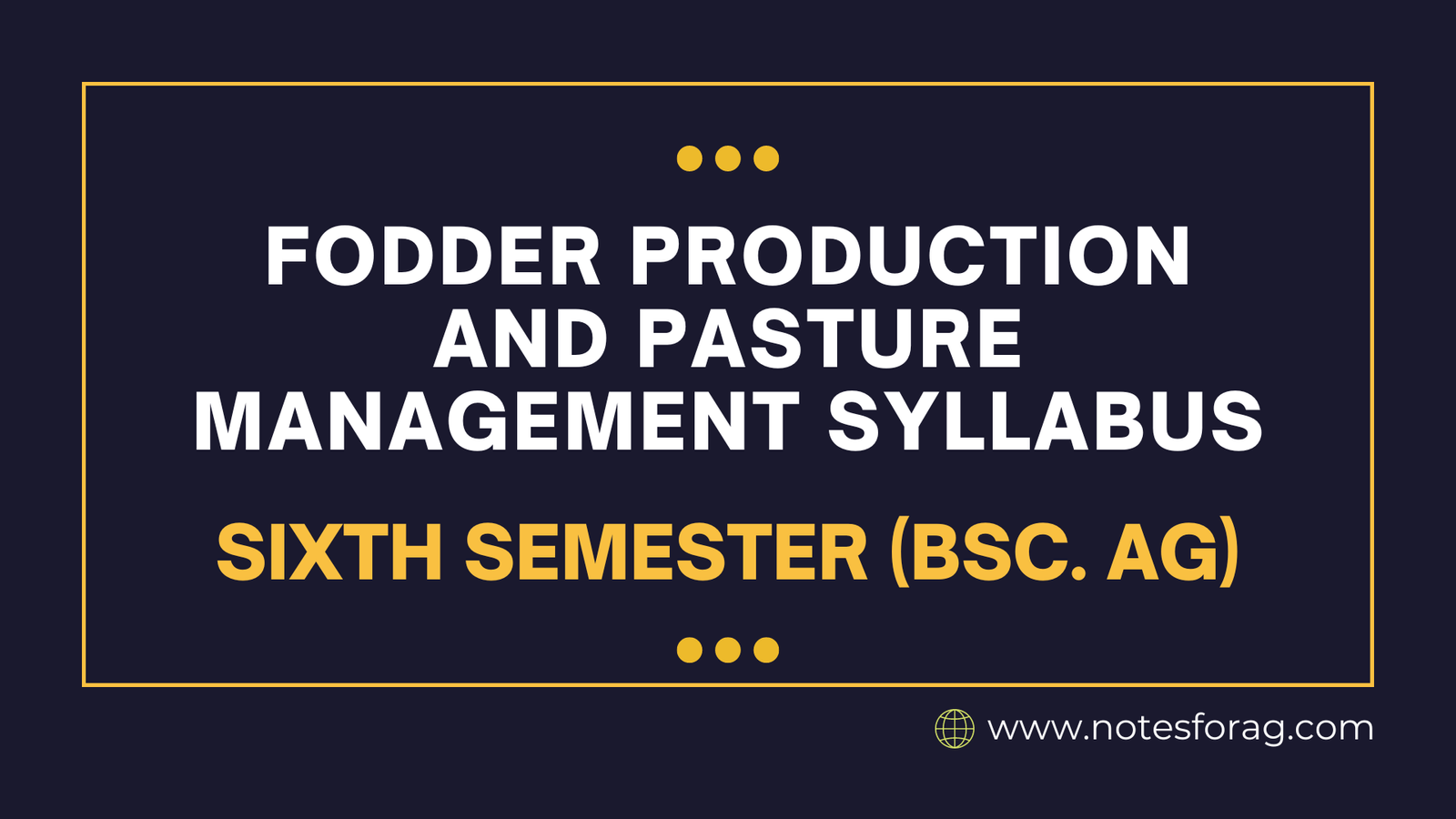| Course Code | ANU 302 |
| Course Title | Fodder Production and Pasture Management |
| Credit Hour | 3(2+1) |
| Full Marks | 75 |
| Theory | 50 |
| Practical | 25 |
Objectives
Upon the completion of this course, the students will be able to know about the fodder production including cultivation practices, major fodder and pasture species grown and their management considering its practical application.
Syllabus of Fodder Production and Pasture Management in Bsc. Agriculture
Introduction: terminology related to fodder and pastures. Climate and soil types. Factors affecting the chemical composition and nutritive value of fodder. Fodder plant growth development and yield. Morphology of forage grasses. Cultivation practices of common annual and perennial fodder grasses and legumes. Common pasture species and their management. Pasture establishment, and nutrition of grazing animals. Preservation of fodder.
Course Outline
A. Theory
B. Practical
| S.N | Topic / Chapter Name | No. of Lectures. |
| 1 | Common features used in identifying vegetative grasses | 1 |
| 2 | Identification of seasonal fodders (grasses and legumes) | 1 |
| 3 | Identification of some common pasture grasses | 1 |
| 4 | Identification of some common pasture grasses | 1 |
| 5 | Identification of common fodder trees and common tree fodder | 1 |
| 6 | Preparation of herbarium sheet | 1 |
| 7 | Cultivation of seasonal fodder covering winter and summer seasons | 2 |
| 8 | Forage fodder sampling | 2 |
| 9 | Proximate analysis | 3 |
| 10 | Determination of green and dry matter yield | 1 |
| 11 | Determining/estimating botanical composition of the pasture mass | 1 |
| Total | 15 |
References
- Banarjee, G.C. 1986. A Text-Book of Animals Nutrition, Published by Mohar Primlani, Oxford and IBH Publishing Co. Pvt. Ltd.
- Bayer,W.and A.W.Bayer.1998.Tropical Agriculture Forage Husbandry.ICAR, MacMillan. Devkota, N.R.2005. A Practical Manual on Basics of Pasture Research and Study.
Devkota and Devkota Family Publishing, Kathmandu, Nepal.P50. - Pandey, R.S.1997. Fodder and Pasture Development in Nepal. Udaya R.D. Service (p.) Ltd. Kathmandu Nepal.
- Pandey, K.K 1982. Fodder Tree and Tree Fodder in Nepal. Swiss Federal Institute of Forestry Research. Birmensdr of , Switzerland.
- Pathak, N.N.and R.C jakhmila. 1983. Forage and Livestock Production. Bikash Publishing House. New Delhi.

